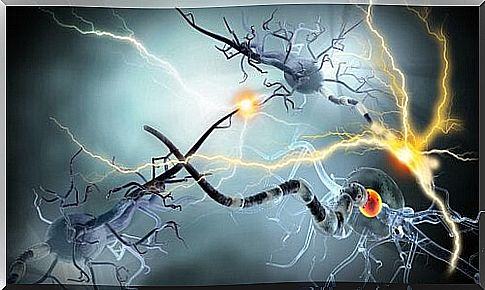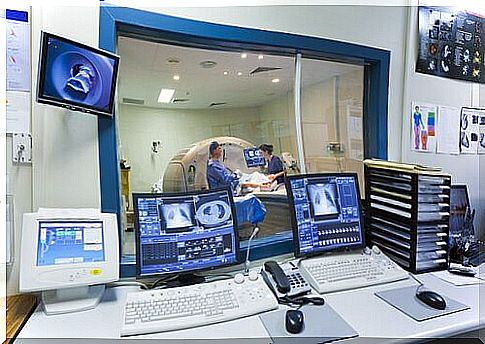What You Need To Know About Multiple Sclerosis

In this article, we’ll tell you everything you need to know about multiple sclerosis (also known as MS). MS is a neurological disorder that affects the central nervous system. It is a chronic disease with different conditions, so each case develops in a different way.
It arises with the appearance of plaque – or areas where the myelin disappears – in the central nervous system. Myelin is the substance that covers and protects the axons of nerve cells. Its main function is to increase the speed of transmission of nerve impulses. The elimination explains the risks most characteristic of this disease.
What you need to know about multiple sclerosis: who is affected by it?
This disease affects more women than men and has a greater impact on whites. It often appears between the ages of 20 and 40 and follows a geographical distribution.
The disease is more common in countries far from the equator. It is therefore mainly found in the northern countries. In fact, it was the Vikings who furthered the spread through their travels.

The latest evidence points to an interesting environmental influence. Vitamin D and heat are protective factors. This may partly explain the geographic distribution of the disease.
What you need to know about multiple sclerosis: how does it develop?
In terms of genetics, it has been shown to be linked to human leukocyte antigens HLA – DR2 and HLA – DQ. The disease is also more common in families that have close relatives with the disease than in the rest of the population.
What you need to know about multiple sclerosis: its clinical manifestations
Neurological Symptoms
The most common (61%) symptoms are tenderness. These may include paresthesias (the sensation of ants crawling across your skin) or hypesthesia, which decreases sensation in an area.
Often in young patients the disease begins as optic neuritis. In these cases, vision becomes blurred and it is painful to move the eyes from their normal position. In fact, this can lead to a one-sided vision loss in a young person. If this is the case, then MS should never be ruled out. Another symptom may be double vision.
Weakness and motor symptoms appear as often as optic neuritis. They are a result of damage to the pyramidal canal.

Meanwhile, other symptoms often appear due to medullary lesions. They can cause impotence and the urgency to urinate. In cervical lesions, it can cause Lhermitte ‘s sign, which gives a feeling of a painful electric shock when the neck is moved.
And if there is a brain lesion, it can be difficult to pronounce words. There may also be a lack of coordination, nystagmus, and tremors.
In advanced cases, it is quite normal to experience neurological impairment manifested in loss of memory. This can also lead to behavioral changes, bouts of euphoria and signs of reluctance.
Patients often experience depression, especially when they are first diagnosed. However, the depression is reactive and is not induced by the disease itself.
Patterns that evolve
MS can develop according to one or more of the following patterns:
- Relapsing remitting pattern: 85% of cases follow this pattern. This pattern produces relapses (periods of deterioration) with no aftermath with the symptoms then returning to the initial situation.
- Secondary progressive pattern: In some cases, symptoms begin to worsen after a bout of relapses.
- Primary progressive pattern: 10% of cases follow a progressive curve from the start, without the experience of relapses. Unfortunately, this form has a poor prognosis.
- Progressive relapsing pattern: this only occurs in 5% of cases of this disease. In this situation, the disease takes a progressive path from the very beginning. There are also relapses and the symptoms are made worse by relapses.

What you need to know about multiple sclerosis: diagnosis
The diagnosis of MS is generally made in the hospital. In addition, there are two basic requirements:
- There should be 2 or more episodes of symptoms separated by at least a month without symptoms (temporal spread).
- The symptoms and signs must contain at least 2 different lesions (spatial distribution). For example, paralysis in one leg and blurred vision in one eye.
A series of tests support the diagnosis.
Analysis of cerebrospinal fluid (CSF)
Normal cerebrospinal fluid is completely transparent and acellular. The cerebrospinal fluid of a person with MS shows the following:
- An increase in lymphocytes and complete proteins.
- An increase in Ig G in almost 80% of patients.
Evoked potentials
Using this technique, one can determine the speed of the sensory pathways. The detection of a delay in electrical conduction in the neural transmission suggests that there is a demyelinated lesion.
Fortunately, a doctor can diagnose this without a clinic. Today they measure it almost exclusively by visual evoked potentials.
MRI (magnetic resonance)
This is the test with the best results for a diagnosis. With just one examination, experts can determine:
- The number of lesions
- The spatial distribution
- The temporal distribution (the most recent lesions are most visible)

‘Dawson fingers’ can be seen in an MRI. These are oval lesions (like fingers). They are perpendicular to the cerebral ventricles and are lesions that, moreover, are very characteristic of this disease.
What you need to know about multiple sclerosis: treatment
At the moment there is still no cure for this disease.
However, current treatments go in two directions:
- On the one hand, they calm the symptoms of the scale.
- On the other hand , they alter the course of the disease.
In addition, there are drugs that are aimed at treating the symptoms.
- Treatment of the severe relapses is accompanied by megadoses of corticosteroids. The pattern and route of administration depend, among other things, on the severity of the relapse.
- Immunomodulators are used to modify the course of the disease. Glatiramer and beta interferon are the primary drugs. These are the most effective out there. The secondary defenses are natalizumab and fingolimod.
The high degree of depression in these patients also explains the need for a good, supportive psychologist.









